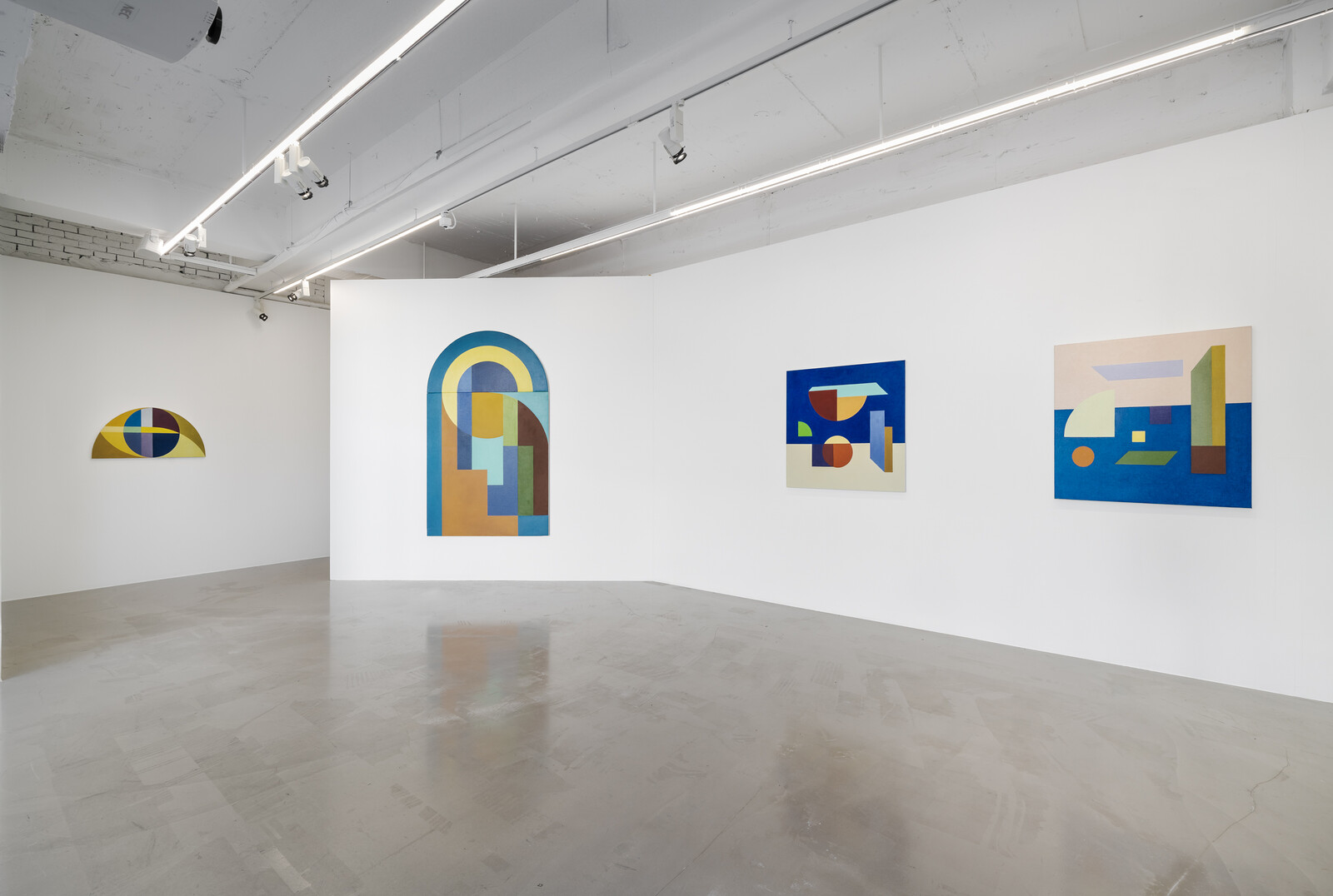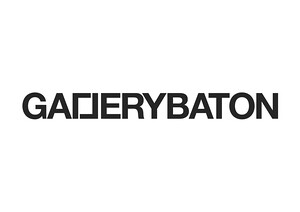October 1–November 9, 2024
116 Dokseodang-ro, Yongsan-gu
04420 Seoul
Republic of Korea
Hours: Tuesday–Saturday 10am–6pm
T +82 2 597 5701
info@gallerybaton.com
Chung Eun-Mo (b.1946) unveils her mature aesthetics developed over time in this exhibition with Gallery Baton that takes place in Korea after almost two decades. Her practice, whose color contrast and comprehensive balance stand out within architectural structures implanted into a canvas, holds a significant and rare position in independently pioneering the geometric abstract field in the progress of contemporary Korean abstraction often represented by Dansaekhwa.
The “anti-reproducibility” in depicting targets or objects is one of the essential approaches of geometric abstraction to seek a pure visual experience rather than relying on a narrative or an image. This aspect plays a fundamental framework role in paintings by Chung; nevertheless, her works are exceptional concerning visually implying architectural features as she adjusts distances and sizes of the figures that establish an organic harmony between the independent or adjacent color faces based on the scenes and places she has seen or experienced. Though what commonly appears in geometric abstract paintings, such as order, balance, and accurately estimated division of spaces, have similarities with the basic grammar of modern architecture, the subtle sense of spatiality found in her practice is an outcome of constant investigation and internalization of “an emphasis on planarity”—a stylistic trait of geometric abstraction—over the years.
“The subtle sense of spatiality,” mentioned in the prior paragraph, results from a particular three-dimensional phenomenon that does not occur instantly but arises when a viewer gazes at artwork for a relatively long time. For example, in the case of 〈C2212〉(2022), as the layer of square shapes on the right is positioned slightly above the height of the light jade-green rectangular on the left. This juxtaposition creates the stereoscopic space behind the two counterpart bodies with the adjoining black polygons and the ocher-colored background thickly painted on the bottom of the central part. 〈C2124〉(2021) shows the artist’s inclination for the architectural mechanism more straightforwardly. The figure in the form of “ㄱ” occupying a large part of the upper right section, with a three-dimensional shading effect, resembles the appearance of a building simplified in a minimalistic way. Given that Italy was the central country of the International Style architecture derived as part of the modernism movement that emerged around World War II, it is not difficult to guess that the structures discovered in Chung Eun-Mo’s paintings are selected depending on her creative intuition among the images she has naturally caught in her ordinary radius.
Interestingly, although Chung has spent most of her lifetime in the Western world since she left Korea in her early days, her paintings contain oriental elements across the overall details, including color, tone and texture. While Hard-edge paintings of the 1960s, which succeeded geometric abstraction and its pedigree, had a de-individual and industrial tendency in terms of coloring geometric configurations, Chung allows the surface of a linen canvas to reveal itself dimly with her brushstrokes; she employs pastel-toned faces over the majority of the plane. As though the two-dimensional surface of Goryeo celadon gains dazzling depths in hue throughout the steps of casting, coloring, glazing and firing, geometric abstract paintings by Chung Eun-Mo manage to convey grains of her own experiences, personal introspections and inner imageries in soft and composed compositions advanced further from the existing diagram to realize orderly and logically organized structures.
Chung Eun-Mo (b.1946) moved from Seoul to New York in the mid-1960s and completed an MFA at the Pratt Institute. She currently lives and works in Italy. She, who has exhibited in Munich, Dublin, Seoul, Milan and many major international cities over the last four decades, has solo exhibitions in Galway Arts Center (2004), the Irish Museum of Modern Art (1994), and Städtische Galerie im Lenbachhaus (1992). Her work is in the collections of Ulster Museum, UK; Städtische Galerie im Lenbachhaus, Germany; Museo d’Arte Contemporanea, Italy; (Irish Museum of Modern Art, Ireland; National Museum of Modern and Contemporary Art, Korea: and Seoul Museum of Art, Korea.








